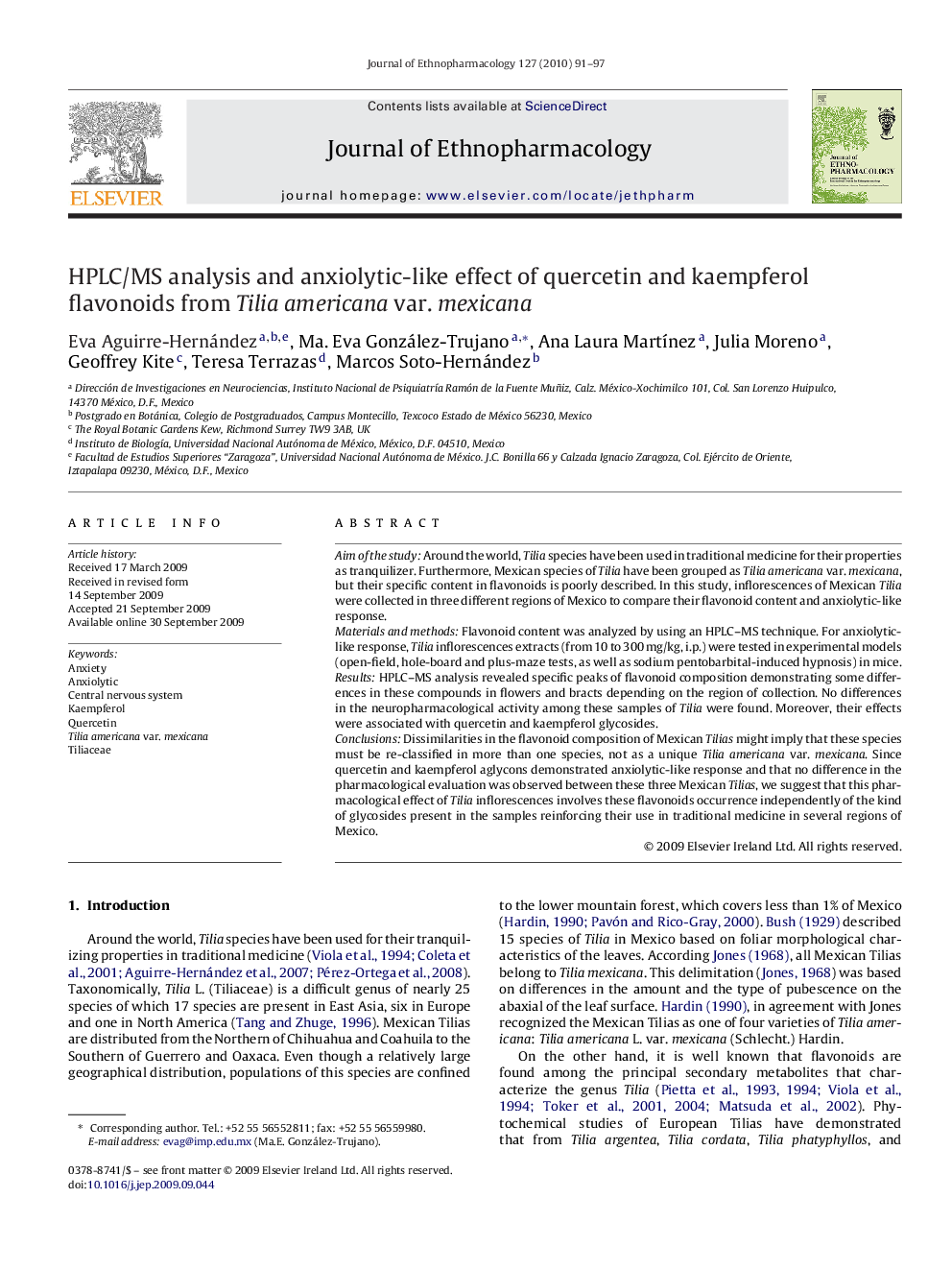| Article ID | Journal | Published Year | Pages | File Type |
|---|---|---|---|---|
| 2546367 | Journal of Ethnopharmacology | 2010 | 7 Pages |
Aim of the studyAround the world, Tilia species have been used in traditional medicine for their properties as tranquilizer. Furthermore, Mexican species of Tilia have been grouped as Tilia americana var. mexicana, but their specific content in flavonoids is poorly described. In this study, inflorescences of Mexican Tilia were collected in three different regions of Mexico to compare their flavonoid content and anxiolytic-like response.Materials and methodsFlavonoid content was analyzed by using an HPLC–MS technique. For anxiolytic-like response, Tilia inflorescences extracts (from 10 to 300 mg/kg, i.p.) were tested in experimental models (open-field, hole-board and plus-maze tests, as well as sodium pentobarbital-induced hypnosis) in mice.ResultsHPLC–MS analysis revealed specific peaks of flavonoid composition demonstrating some differences in these compounds in flowers and bracts depending on the region of collection. No differences in the neuropharmacological activity among these samples of Tilia were found. Moreover, their effects were associated with quercetin and kaempferol glycosides.ConclusionsDissimilarities in the flavonoid composition of Mexican Tilias might imply that these species must be re-classified in more than one species, not as a unique Tilia americana var. mexicana. Since quercetin and kaempferol aglycons demonstrated anxiolytic-like response and that no difference in the pharmacological evaluation was observed between these three Mexican Tilias, we suggest that this pharmacological effect of Tilia inflorescences involves these flavonoids occurrence independently of the kind of glycosides present in the samples reinforcing their use in traditional medicine in several regions of Mexico.
Graphical abstractPharmacological activity of the Tilia americana var. mexicana inflorescences from three regions of Mexico was tested in experimental models like sodium pentobarbital-induced hypnosis in mice. Flavonoid content was analyzed by using an HPLC–MS technique.Figure optionsDownload full-size imageDownload as PowerPoint slide
